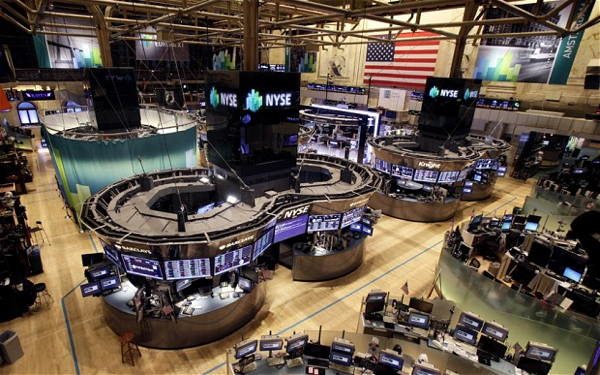Will The American Economy Still See Red In 2013?

The Article: America’s economy: Looking Better in The Economist.
The Text: WHEN Barack Obama was sworn in four years ago, the economic figures were terrifying. A financial crisis and a savage recession were in full swing, and house foreclosures were soaring. The day of his inauguration, panic about the banks sent the Dow Jones Industrial Average down more than 300 points. At the start of his second term, by contrast, the Dow hit a five-year high, while a widely followed index of investor fear called the VIX reached a near-six-year low (see table).
The change in mood is understandable. The financial crisis and recession ended more than three years ago. The housing market is firmly on the mend. Employment is growing. The euro zone, though feeble, is no longer about to collapse. And the threat of home-grown crisis appeared to recede when Republicans in the House forbore to use the threat of default to extract spending cuts. On January 18th they said they would raise the Treasury’s statutory ceiling until May 18th; previously, the Treasury had expected to run out of borrowing authority as early as mid-February.
On average, the economy performs less well in a president’s second term than in his first (see chart). That pattern probably does not apply to Mr Obama. Since his first term was so difficult, the next, by rights, ought to be better.
What could spoil matters? Some of the risks are illustrated by the experience of Franklin Delano Roosevelt, who arrested a downward spiral in the economy and the financial system during his first term. But unemployment was still painfully high when his second term began in 1937. Then monetary and fiscal policy both turned contractionary, triggering the “depression within a depression” in 1937-38.
While the economy today remains weak—it is still as far below its full productive potential as it was four years ago—the Federal Reserve is far less likely to sink it. The Fed has indicated that it does not expect to raise interest rates until 2015 at the earliest. That will help households and corporations, which dramatically boosted saving and slashed spending after the crisis, to recover their appetite for borrowing. “When the balance-sheet-repair process has proceeded sufficiently, you will get a boost from the private sector, and you’re seeing it,” for example in housing, says Jan Hatzius of Goldman Sachs.
That, Mr Hatzius adds, will be enough to lift growth to an average of 3% from 2014 to the end of 2016. That is, as long as private-sector releveraging is not overwhelmed by public-sector retrenchment. That is not out of the question. The expiry of last year’s payroll-tax cut and higher taxes on the wealthy at the start of this year will squeeze incomes generally: the main reason that economists expect growth in 2013 of only about 2%.
More seriously, the threat of more austerity also remains. Republicans shifted the deadline on the debt ceiling principally to obtain leverage over Mr Obama through the sequester—automatic, across-the-board spending cuts. If it kicks in as scheduled in March, Macroeconomic Advisers, a consultancy, reckons it would knock 0.7 percentage points off growth this year. Though both parties would like to replace the sequester with more gradual, selective deficit cuts, they cannot agree on how to do so. Then, at the end of March, a resolution that finances roughly a third of the government expires, raising the possibility of a government shutdown.
“A big part of why the US economy is doing better than Europe’s is precisely because we did not switch to rapid austerity,” says Christina Romer, a former economic adviser to Mr Obama. Far better, she says, to channel deficit-reduction efforts into reforms that reduce growth in entitlements such as health care for the elderly, which do not hammer the economy now but pay off handsomely in the long run. That is a tradeoff which both Mr Obama and the Republicans would be wise to make.









